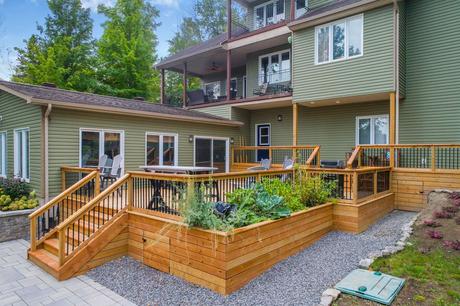The deck is a great place to relax, enjoy nature, or entertain family and friends. It also adds beauty by enhancing your patio garden and may add value to your home. However, creating a unique outdoor space costs money, which is one of the main reasons most homeowners turn to weekend deck building projects by themselves. Unfortunately, a DIY approach may not follow the best construction practices, and you might end up making mistakes that will cost you in the long run.
Here are a few of the most frequent deck building mistakes and how you can avoid them.

Photo credit: Unsplash
#1 Incorrectly Attaching the Ledger BoardThe ledger is a vital component that joins non-freestanding decks to a structure. It's usually made of pressure-treated lumber and offers much of the deck's strength by creating rigidity to the frame and supporting the joists. You must attach the ledger to the studs of the main structure for proper deck installation, and you shouldn't attach it to cursory materials such as stucco or brick.
Building codes have specific rules on how to install a ledger, so be sure to carefully read the requirements before commencing the work. Improper installation might cause serious issues, including the deck disconnecting itself from the structure or collapsing.
#2 Not Seeking Professional HelpIt's good to seek professional guidance if you are unsure how to build a deck or what materials to use. Experienced contractors or deck builders like Excel Builders can help you choose the right materials and design for your home. They can also provide you with an estimate of how much your deck installation project will cost.
Trying to DIY without professional guidance may cost you more in the long run. Hiring a professional is worth your investment and will give you peace of mind knowing that your deck is being properly built.
#3 Improperly Spacing Deck JoistsThe spacing of deck joists is exceptionally essential and should never be overlooked. This is particularly true if you are using composite decking. Amalgamated decking spacing is vital as it prevents the decking boards from sagging over time.
Before you begin to install the undercarriage of your deck, be sure to go through the installation requirements for decking. For instance, if you plan to install your decking on a diagonal, the joint spacing should be 12 inches in the center. That is because the diagonal length across joists is more than the distance you measure perpendicularly across the joists.
#4 Not Checking Local Codes or Getting the Required PermitsDecks should always be built to be structurally strong and to code. Building codes are usually derived from the International Residential Code (IRC), with amendments made at the local level. Local amendments show the area's climate and other requirements. You will usually find this information on your official government website.
You should also consult local codes before you draw up your deck plan to ask whether you require a permit. Most states require a building permit for any addition to a main house.
Building a deck might seem overwhelming, but it's ultimately a rewarding endeavor. However, it's essential to know what you are taking up before you start digging your first post hole. Ensure you are properly prepared, eager, and able to deal with issues that may arise. Look for a deck builder near you to help avoid these prevalent deck building mistakes.
